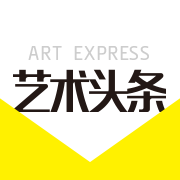
'Genial Dilletantes: Subculture in Germany in the 1980s' on view at Haus der Kunst
2015-08-17 15:13:28 未知
"Geniale Dilletanten" was the term used to announce a concert held in Berlin’s Tempodrom in 1981. The deliberately misspelled title has become synonymous with the brief era of artistic upheaval in Germany between 1979 and 1984. Developed particularly in and around art schools, strong subculture scenes formed in many German cities. With their use of brute noise, provocative Super 8 films, cheap photocopied fanzines, independently produced samples, design that challenged “good taste”, and a new, wild language for figurative painting and sculpture, these artists opposed the prevailing zeitgeist in Germany. Emphasis was placed on expression rather than technical perfection, artistic impact rather than skill. These players probed the possibilities of total opposition with the same vehemence they directed against official policy and the legacy of the '68 generation. Loud protests and deliberate provocation helped this alternative artistic scene gain international recognition before it petered out in commercialism as the Neue Deutsche Welle ("New German Wave”).
The broad range of the subculture is illustrated in the exhibition through works of film, art, design, fashion and seven bands:
• "Einstürzende Neubauten" explored the boundaries between music and noise with instruments created out of scrap metal and everyday objects;
• "Die Tödliche Doris" experimented with music, film, photography, object art and painting;
• "The Plan" emerged from a gallery whose members performed in surreal costumes and sang ironic and sarcastic lyrics;
• "Freiwillige Selbstkontrolle (F.S.K.)" was formed in 1980 and rejected the demand for authenticity so persistently that initially they did not even wish to perform, and later only behind curtains or plastic sheeting;
• "Palais Schaumburg" combined synthesizers and samplers with trumpets and bizarre atonal recited singing;
• "Ornament und Verbrechen": the band’s East Berlin artists and musicians were influenced by jazz and industrial and electronic music;
• the duo “Deutsch Amerikanische Freundschaft (D.A.F.)” combined provocative lyrics with hard drum beats, synthesizers and effects and put on a stage show situated between ecstasy and riot.
The bands underpinned their aspiration to bring about a radical break with mainstream music by their deliberate relinquishment of virtuosic skill. The musicians were determined to distinguish themselves from conventional rock bands: "No sweaty musicians on stage, no celebration of one’s self, no texts about the members’ innermost thoughts," as the F.S.K. maxim defined.
The movements’ players met in clubs and venues such as the "Ratinger Hof" (Dusseldorf), the record store "Rip Off" (Hamburg), "Kumpelnest", "SO36" and "Risiko" (Berlin) or at the barber shop "Penny Lane" (Cologne) to play and listen to music, drink and dance, or develop new ideas. Videos and photographs document the concerts, meetings and actions, including the difficult circumstances under which "Ornament und Verbrechen" performed in East Berlin: without permission and under changing pseudonyms. Their clandestine gigs took place at art events, lectures or FDJ events. The Super 8 film documentation of their first concert was restored for the exhibition.
At the same time, Rainer Fetting, Salomé, Markus Oehlen and Jörg Immendorff expressed in their painting the close relationship between the music and club scenes and the art scene. Markus Oehlen was also a musician and cassette DJ at Ratinger Hof. The painters intervened creatively in the events and also took advantage of such crude spaces in order to counter, by pictorial means, the music with something analogous. In just three days, Bernd Zimmer painted a cityscape of the Warsaw Bridge. The three-part, 28meter-wide work depicts a detail of a passing tram. On October 25, 1978 at SO36, Zimmer confronted a public not necessarily interested in painting with the work. The painting was taken down the very next day. Of all the works with which the painters tried to engage with the music scene, this was the most spectacular. The presentation of the image at the Haus der Kunst extends beyond the walls of two rooms.
Helmut Middendorf, Walter Dahn and Elvira Bach also satisfied the then prevailing "hunger for images" and made direct references in their work to the music scene and individual stage performances. These paintings are included in the selection of works together with audio samples, magazines and billboards.
A specially produced interview film provides insight into the networks and the brief parallel development in art, film, fashion and design. Musicians of the bands, artists, record store owners, filmmakers, producers, designers, fashion designers and photographers are among the interviewees.
"Geniale Dilletanten" was designed as a touring exhibition by the Goethe-Institute and has been substantially expanded for its presentation in Haus der Kunst.
(责任编辑:张天宇)
注:本站上发表的所有内容,均为原作者的观点,不代表雅昌艺术网的立场,也不代表雅昌艺术网的价值判断。

 李铁夫冯钢百领衔 作为群体的早期粤籍留美艺术家
李铁夫冯钢百领衔 作为群体的早期粤籍留美艺术家 张瀚文:以物质媒介具象化精神世界
张瀚文:以物质媒介具象化精神世界 吕晓:北京画院两个中心十年 跨学科带来齐白石研究新突破
吕晓:北京画院两个中心十年 跨学科带来齐白石研究新突破 春雨斋主人房茂梁:“好运气”的90后古玩经纪人
春雨斋主人房茂梁:“好运气”的90后古玩经纪人
全部评论 (0)